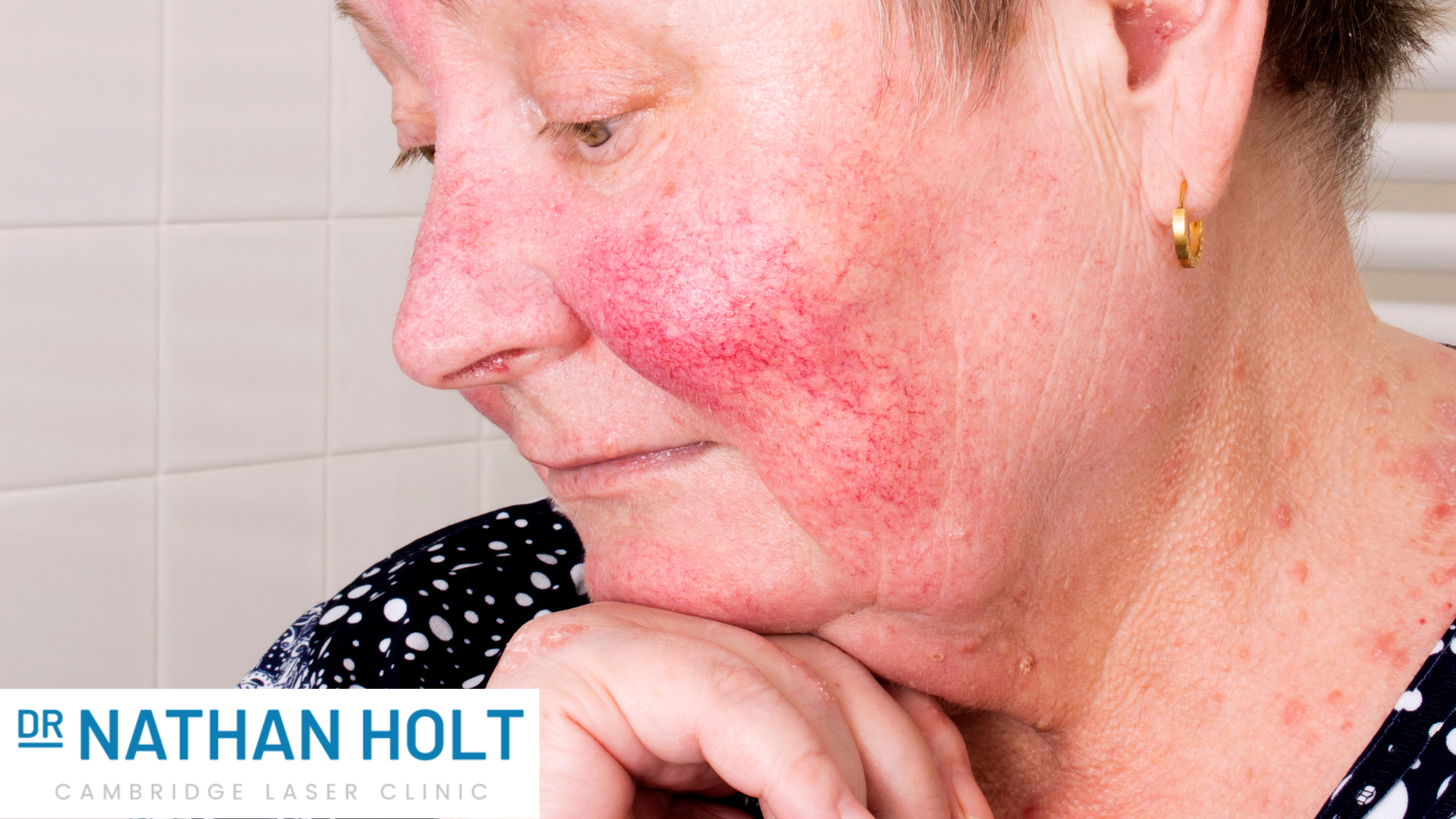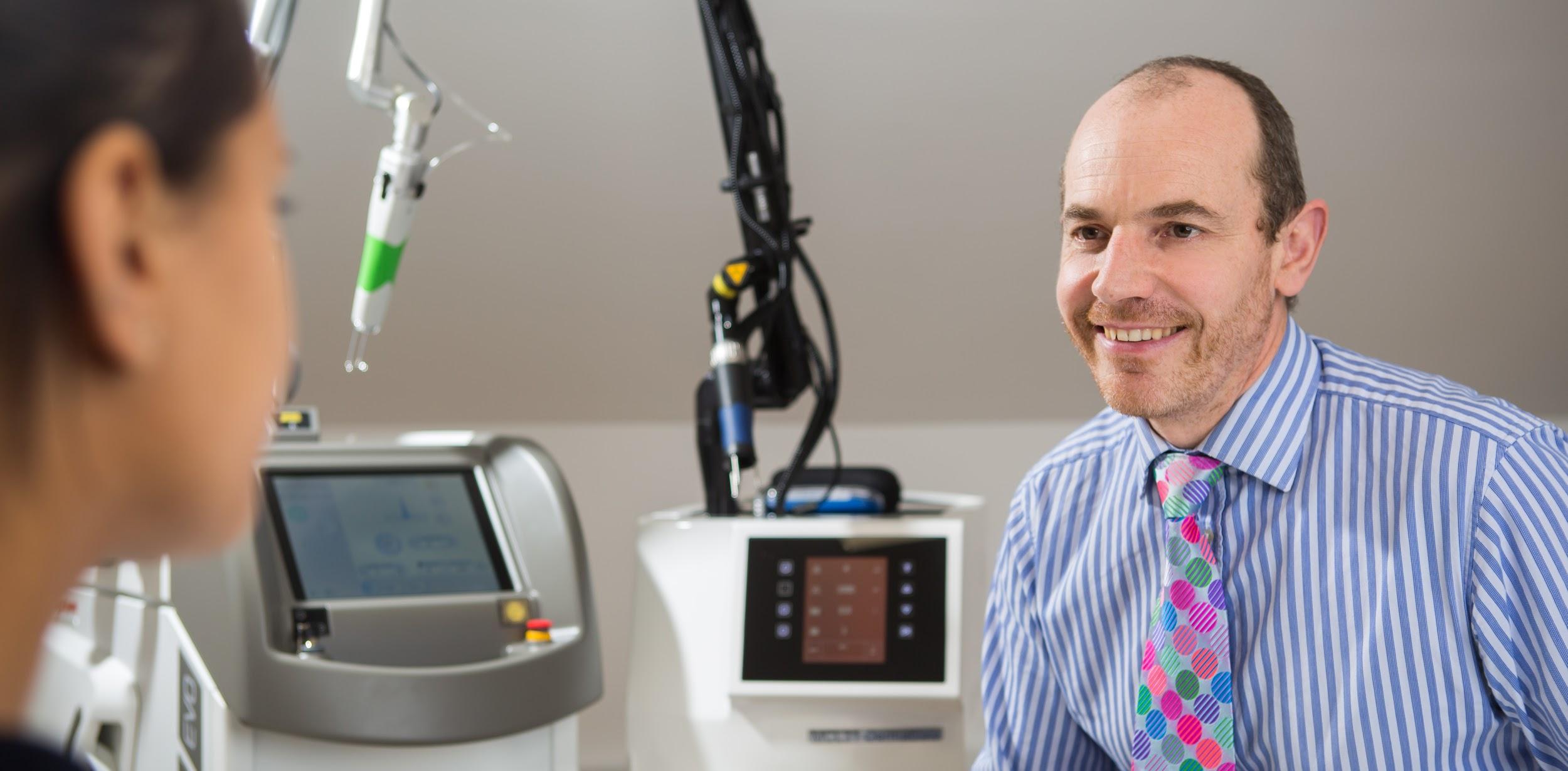April marked Rosacea Awareness Month, a time dedicated to spreading awareness about this chronic skin…

Common Types of Scars And How To Treat Them: A Guide by Cambridge Laser Clinic
Scars are a natural part of the skin’s healing process, but their appearance can vary widely depending on factors such as skin type, depth of injury, and individual healing response. At Cambridge Laser Clinic, we understand the impact that scars can have on self-confidence and overall well-being. That’s why we offer a range of advanced laser treatments tailored to address the most common types of scars effectively. In this blog post, we’ll explore the different types of scars and the laser treatments available to treat them.
Red Scars or Post Inflammatory Erythema (PIE):
Red scars are more common in lighter skin types and may persist due to increased vascularity or transparency. The most common types of red scars are acne scars, trauma scars resulting from an injury, surgical scars and rash or allergic reaction scars.
Our optimal treatment for the removal of unwanted redness utilises the VBeam Prima 595nm PDL laser. This laser targets haemoglobin in the blood vessels, effectively reducing redness and promoting an even skin tone.
Brown Scars or Post Inflammatory Hyperpigmentation (PIH):
Brown scars are more common in darker skin types and result from excessive melanin accumulation within the scar. These types of scars often come from acne, eczema, allergic reactions, burns and insect bites.
Treatment with Q-switched Ruby 694nm, Q-switched or Pico, KTP 532nm, or Nd Yag 1064nm lasers can help fade unwanted pigmentation. These lasers target melanin deposits, reducing hyperpigmentation and restoring a more uniform skin tone.
Ice Pick Scars:
Ice pick scars are deep, narrow scars that give the skin an appearance as if it has been punctured with an ice pick. People often have these types of scars from severe acne, chickenpox, traumatic and accidental traumas and surgery.
Our optimal treatment for ice pick scars is TCA Cross. This procedure involves placing droplets of 100% TCA into the scar, promoting the migration of fibroblasts and stimulating new collagen production, resulting in improved skin texture and smoothness.
Boxcar Scars:
Boxcar scars are sunken and round in appearance, resembling chickenpox scars. Boxcar scars can also result from acne, surgery and in some cases, dermatological procedures. For optimal treatment, we utilize Er Yag 2940nm and CO2 10,600nm lasers in both traditional and fractional modes. These lasers target the scar tissue, promoting collagen remodelling and skin regeneration, leading to smoother, more even skin texture.
Rolling Scars:
Rolling scars occur due to tethering of otherwise normal-looking skin, resulting in an undulating surface appearance. These scars create a rolling or wave-like appearance on the skin’s surface. often result from acne, surgical procedures and trauma. Rolling scars can be challenging to treat effectively, but our optimal treatment for rolling scars also involves Er Yag 2940nm and CO2 10,600nm lasers in both traditional and fractional modes. These lasers help to release the tethered skin and stimulate collagen production, improving the overall texture and appearance of the skin.
Don’t Let Your Scars Hold You Back
Scars come in various forms, each with its unique characteristics and challenges. At Cambridge Laser Clinic, we’re committed to providing advanced laser treatments tailored to address the specific needs of our patients. Whether you’re dealing with redness, pigmentation issues, or textural irregularities, our team of experts is here to help you achieve smoother, more radiant skin. Don’t let scars hold you back – schedule a consultation with us today and take the first step towards renewed confidence and self-esteem.



